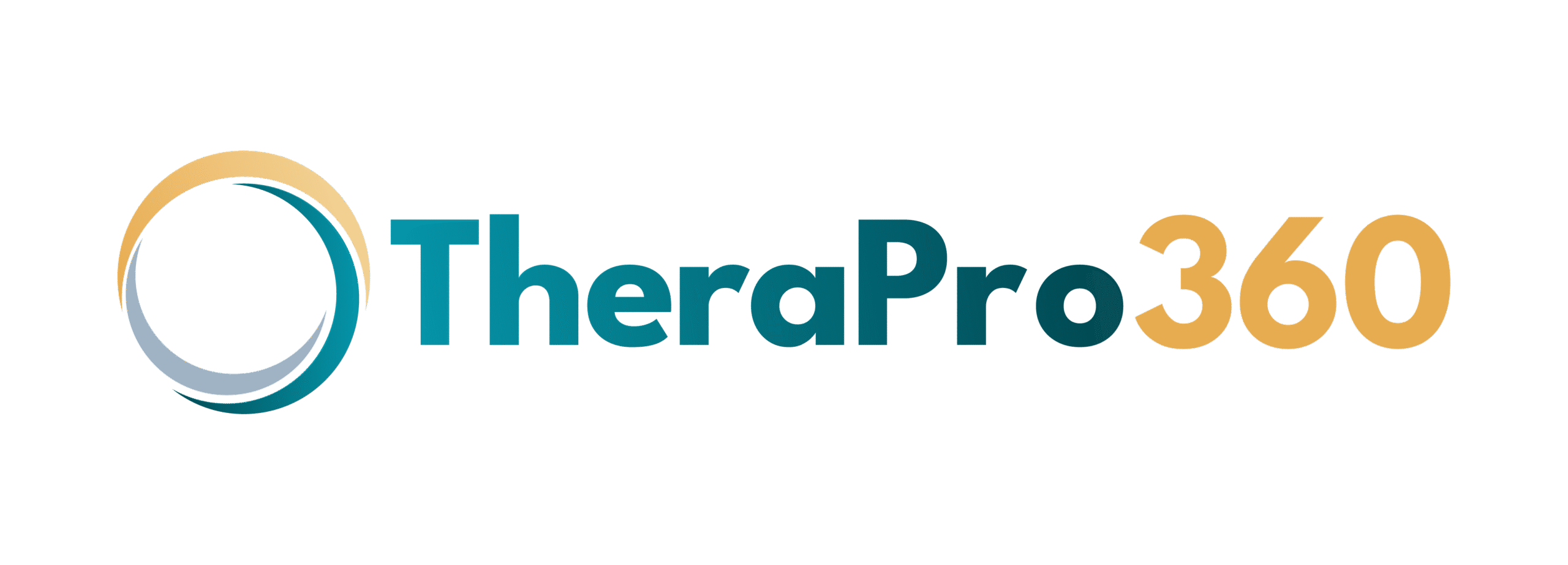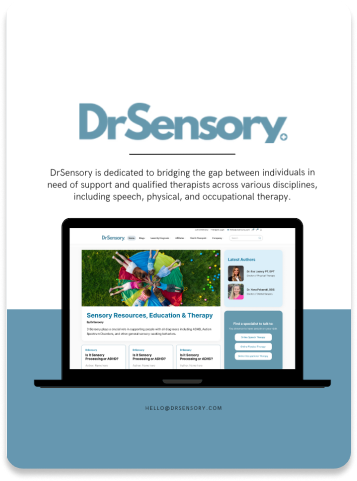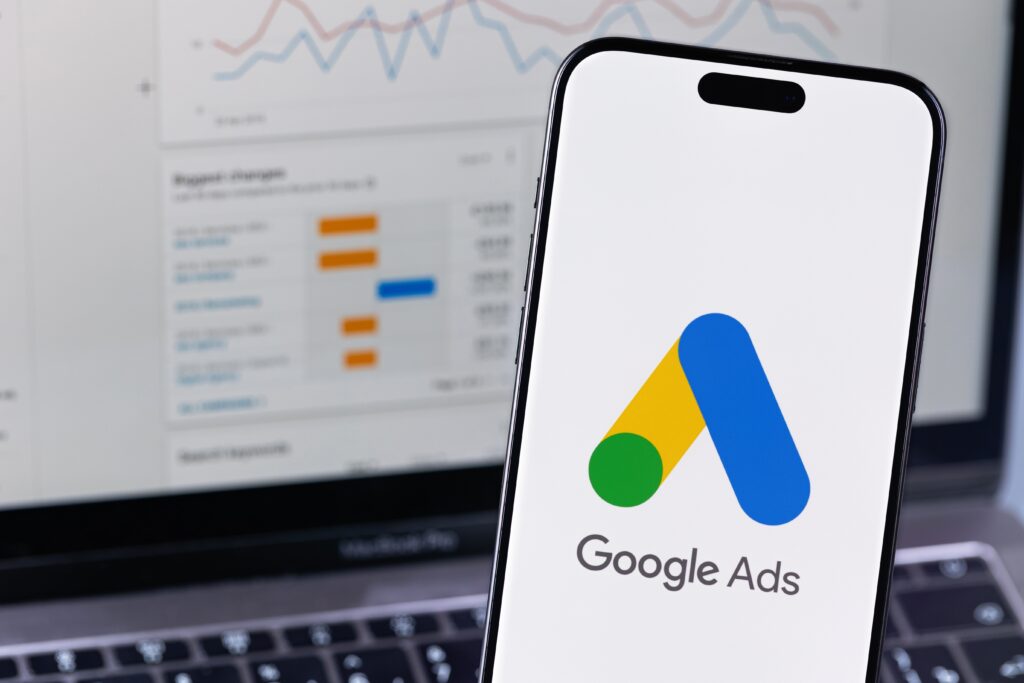
Blog
Therapy Website Redesign: What’s the ROI When You Add SEO & Conversion Optimization?
Expert web designers ensure the site and software is easy to use.Therapy Website Redesign: What’s the ROI When You Add SEO & Conversion Optimization?
You’ve been thinking about redesigning your therapy website for months. The design feels outdated, potential clients seem to bounce quickly, and despite your expertise, new client inquiries remain disappointingly low. But before you invest thousands in a new website, you want to know: what’s the actual return on investment?
The answer might surprise you. When done strategically with SEO and conversion optimization, a therapy website redesign typically pays for itself within 3-6 months and continues generating returns for years. But the key lies in going beyond just making your site “look better.”
In this comprehensive guide, we’ll break down the real ROI of therapy website redesigns, examine proven conversion optimization strategies, and show you exactly how to measure success. You’ll discover why combining visual improvements with SEO and conversion optimization creates exponential returns rather than incremental gains.

Why Most Therapy Websites Don’t Convert Visitors into Clients
The harsh reality? Most therapy websites function as expensive digital brochures that fail to convert visitors into clients. Despite receiving decent traffic, many practices struggle to turn website visits into phone calls, email inquiries, or appointment bookings.
This conversion problem stems from several common issues. First, many therapy websites lack clear calls-to-action. Visitors land on your homepage, read about your services, but have no obvious next step. Without guided direction, even interested potential clients often leave without taking action.
Second, trust barriers prevent conversion. Therapy represents a deeply personal decision requiring significant trust. Websites that feel impersonal, lack social proof, or seem unprofessional fail to build the confidence necessary for someone to reach out for help.
Third, mobile optimization problems create friction. Over 60% of therapy-related searches happen on mobile devices, yet many websites provide poor mobile experiences. Slow loading times, difficult navigation, and hard-to-read text create immediate barriers to conversion.
Technical issues compound these problems. Broken contact forms, missing phone numbers, confusing navigation, and outdated content all contribute to conversion failures. Even worse, these issues often go unnoticed by practice owners who rarely view their websites from a potential client’s perspective.
The cost of poor conversion rates extends far beyond missed opportunities. You might invest in SEO, advertising, or other marketing efforts to drive traffic, but without proper conversion optimization, you’re essentially pouring water into a leaky bucket.
7 Signs Your Therapy Website Needs a Redesign to Attract More Clients
Case Study: DrSensory.com—Boosting SEO and Conversions with a Strategic Redesign
Take the evolution of DrSensory.com—a comprehensive therapist database connecting users to physical therapists (PTs), occupational therapists (OTs), and speech-language pathologists (SLPs) nationwide. Their site offers medically reviewed content covering pediatric conditions, diagnosis-specific information (like ADHD, SPD, ASD), and therapy-related resources for issues such as post-surgical recovery.
Before the redesign, DrSensory.com was already a treasure trove of medically reviewed content and a comprehensive database for PTs, OTs, and SLP professionals. However, its immense value was underutilized due to low organic traffic and limited user engagement. The platform’s vast resources and expert content needed better organization to align with user search intent, and users faced challenges navigating to find local providers efficiently. These opportunities for improvement set the stage for a transformative redesign that would unlock DrSensory’s full potential.
The redesign strategically prioritized SEO and conversion optimization. DrSensory.com implemented robust location-specific search features, added clear navigation for therapy specialties and diagnoses, and integrated schema markup across all provider and information pages. Medically reviewed content was further organized into topic clusters, boosting authority for both broad and long-tail therapy-related keywords.
The results were impressive. Six months post-launch, organic search traffic grew by 180%. Provider search conversions jumped by 210%, and time on site increased as users engaged with the organized, trusted resources. Location-specific landing pages saw significant improvements in local SEO rankings, often appearing in top spots for searches like “pediatric OT near me” and “speech therapy for autism in Chicago.” The investment not only improved user trust and engagement but also established DrSensory.com as a leading authority for therapy-related information and provider search tools.
Why Your Therapy Website Isn’t Ranking—and How to Fix It with Local SEO & AEO
Understanding the ROI of SEO-Driven Web Design
Traditional website redesigns focus primarily on aesthetics—updating colors, fonts, and layouts to create a modern appearance. SEO-driven redesigns take a fundamentally different approach, prioritizing search visibility and user experience alongside visual improvements.
The ROI difference is dramatic. While aesthetic-only redesigns might provide marginal improvements, SEO-driven redesigns often double or triple organic traffic within six months. This traffic increase compounds conversion improvements, creating exponential rather than linear returns.
SEO-driven design considers search engine requirements from the ground up. Technical factors like page speed, mobile responsiveness, and proper URL structure get built into the foundation rather than added as afterthoughts. Content architecture follows SEO best practices, ensuring every page can rank for relevant keywords.
More importantly, SEO-driven design aligns with user behavior patterns. Search engine algorithms increasingly prioritize user experience signals like time on site, bounce rate, and conversion rates. Websites that satisfy both search engines and users naturally perform better in both rankings and conversions.
The compounding effect creates extraordinary ROI potential. Better SEO brings more traffic. Better conversion optimization turns more traffic into leads. Higher-quality leads convert at better rates. Satisfied clients provide referrals and positive reviews, further boosting SEO performance.
Consider the mathematics: if a redesign increases traffic by 150% and improves conversion rates by 100%, the combined effect increases leads by 400%. For most therapy practices, this represents the difference between struggling to fill appointments and maintaining a waiting list.
SEO + CRO: The Winning Combo for Therapy Practices
Search engine optimization and conversion rate optimization work synergistically to maximize website performance. SEO brings qualified traffic to your website, while CRO ensures that traffic converts into leads and clients.
The combination addresses the complete client journey. SEO captures attention when potential clients search for therapy services. CRO guides them through the decision-making process and encourages contact. Together, they create a powerful client acquisition system.
SEO Benefits for Therapy Practices:
- Increased visibility for local searches
- Higher rankings for service-specific keywords
- More qualified traffic from organic search
- Reduced dependence on paid advertising
- Long-term, sustainable lead generation
CRO Benefits for Therapy Practices:
- Higher percentage of visitors become leads
- Improved quality of inquiries
- Better user experience across all devices
- Increased trust and credibility
- More efficient use of marketing investments
The synergy between SEO and CRO creates additional benefits beyond their individual impacts. SEO-optimized content that’s also designed for conversion performs better in search rankings because user engagement metrics improve. Similarly, conversion-optimized pages that load quickly and provide excellent user experiences receive SEO boosts from improved user signals.
Visual Hierarchy and Conversion Optimization for Therapy Clinics
Visual hierarchy guides visitors through your website in logical, conversion-focused sequences. For therapy websites, this means strategically directing attention toward trust-building elements and calls-to-action while maintaining professional aesthetics.
Effective visual hierarchy for therapy sites starts with clear value propositions. Your homepage should immediately communicate who you help and how you help them. Visitors should understand your specialty and approach within seconds of landing on your site.
Navigation design impacts conversion rates significantly. Complex menus confuse visitors and create decision paralysis. Simplified navigation with clear categories like “Services,” “About,” and “Contact” guides visitors efficiently toward conversion points.
Call-to-action placement and design require strategic consideration. Primary CTAs should stand out visually without appearing pushy or commercial. For therapy websites, softer language like “Schedule a Consultation” or “Get Help Today” often outperforms aggressive sales language.
Trust signals deserve prominent placement in your visual hierarchy. Credentials, certifications, professional photos, and testimonials should appear early in the visitor experience to build confidence and credibility.
Improving Booking Rates with Better Page Speed & Mobile UX
Page speed directly impacts both search rankings and conversion rates. Google considers page speed a ranking factor, while users abandon slow-loading sites at alarming rates. For therapy websites, speed problems create additional barriers because visitors are often already anxious about reaching out for help.
Mobile user experience deserves special attention for therapy websites. Many people research therapy services privately on their phones during moments of need or crisis. A website that’s difficult to navigate on mobile devices may lose these vulnerable visitors when they need help most.
Mobile Optimization Priorities:
- Fast loading times (under 3 seconds)
- Easy-to-read text without zooming
- Clickable phone numbers for immediate contact
- Simple, intuitive navigation
- Forms that work seamlessly on small screens
- Clear, prominent calls-to-action
Touch-friendly design elements prevent user frustration. Buttons should be large enough for finger navigation, forms should minimize typing requirements, and important information should remain visible above the fold.
Location and contact information deserve special mobile consideration. Mobile users often want immediate directions or phone contact. Ensure this information is prominently displayed and easily accessible from any page.

How a Redesign Impacts Search Rankings and Client Conversion
Website redesigns create opportunities to address multiple SEO and conversion issues simultaneously. Technical improvements, content optimization, and user experience enhancements compound to deliver significant performance improvements.
Technical SEO Improvements:
- Faster loading speeds through modern coding and hosting
- Mobile-first responsive design for better mobile rankings
- Proper URL structure and site architecture
- SSL security implementation
- Clean, efficient code that search engines can crawl easily
Content Optimization Opportunities:
- Keyword-optimized page titles and meta descriptions
- Proper heading tag hierarchy throughout the site
- Location-based content for local SEO
- Service-specific pages targeting relevant keywords
- FAQ sections optimized for voice search and featured snippets
Conversion Rate Improvements:
- Streamlined navigation and user flow
- Compelling calls-to-action on every page
- Trust signals and social proof integration
- Mobile-optimized contact forms
- Clear value propositions and service descriptions
The timing of redesign implementation allows for comprehensive optimization that would be difficult to achieve with piecemeal updates. Starting fresh enables implementation of best practices without legacy constraints.
Best Keywords for Physical Therapy SEO (With Examples)
Content Marketing Ideas for Physical Therapists
Social Media Marketing for Physical Therapists: A Strategic Guide
Using Heatmaps & Analytics to Measure Therapy Website ROI
Measuring redesign ROI requires comprehensive tracking of both traffic and conversion metrics. Google Analytics provides essential data about visitor behavior, traffic sources, and conversion paths, while heatmap tools reveal how users actually interact with your pages.
Key Metrics to Track:
- Organic search traffic growth
- Local search visibility improvements
- Conversion rate changes (inquiries per visitor)
- Average time on site and bounce rate
- Mobile traffic performance
- Revenue attribution from website leads
Heatmap analysis reveals user behavior patterns that pure analytics miss. You can see where visitors click, how far they scroll, and which elements capture attention. This data guides ongoing optimization efforts and identifies conversion barriers.
Goal tracking in Google Analytics quantifies the value of website improvements. Set up goals for contact form submissions, phone calls, and appointment bookings to measure actual business impact rather than just traffic metrics.
Tracking ROI with Tools Like GA4 and Clarity
Google Analytics 4 (GA4) provides advanced tracking capabilities for measuring redesign impact. Enhanced e-commerce tracking can attribute revenue to specific traffic sources, while audience insights reveal how different visitor types interact with your site.
Microsoft Clarity offers free heatmap and session recording functionality that complements GA4 data. Watching actual user sessions helps identify friction points and optimization opportunities that might not be apparent from standard analytics reports.
ROI Calculation Framework:
- Track pre-redesign baseline metrics (traffic, conversions, revenue)
- Monitor post-redesign improvements across all metrics
- Calculate increased monthly lead value
- Compare against redesign investment costs
- Project long-term value based on client lifetime value
Remember to account for the long-term nature of SEO improvements. While conversion optimizations often show immediate results, SEO benefits typically compound over 6-12 months as search rankings improve.

Real ROI Data from Redesigned Therapy Sites
Analyzing real-world redesign results provides concrete expectations for therapy practices considering website investments. The following examples represent typical outcomes when combining visual redesign with SEO and conversion optimization.
Case Study 1: Solo Mental Health Practice
- Investment: $6,500 redesign
- Pre-redesign: 150 monthly visitors, 2 inquiries
- Post-redesign (6 months): 380 monthly visitors, 12 inquiries
- ROI: 400% increase in leads, 153% traffic growth
- Payback period: 2.5 months
Case Study 2: Multi-Location Physical Therapy Clinic
- Investment: $15,000 comprehensive redesign
- Pre-redesign: 800 monthly visitors, 15 inquiries across all locations
- Post-redesign (6 months): 1,900 monthly visitors, 45 inquiries
- ROI: 200% increase in leads, 138% traffic growth
- Payback period: 4 months
Case Study 3: Specialized Trauma Therapy Practice
- Investment: $8,200 redesign with specialized content
- Pre-redesign: 220 monthly visitors, 4 inquiries
- Post-redesign (6 months): 650 monthly visitors, 18 inquiries
- ROI: 350% increase in leads, 195% traffic growth
- Payback period: 3 months
These examples demonstrate consistent patterns: traffic typically increases 100-200%, conversion rates improve 150-300%, and payback periods range from 2-6 months depending on practice size and market competition.
Therapy Software Integration as a Revenue Multiplier
Modern therapy website redesigns should integrate seamlessly with practice management software to maximize efficiency and revenue potential. Online scheduling, telehealth capabilities, and automated intake processes reduce administrative burden while improving client experience.
Revenue-Boosting Integrations:
- Online appointment scheduling reduces phone tag and captures more bookings
- Secure client portals improve retention and reduce no-shows
- Telehealth integration expands service capacity and geographic reach
- Automated intake processes streamline new client onboarding
- Payment processing capabilities reduce billing delays
Integration effectiveness depends on choosing software that aligns with your practice needs and client preferences. Simple scheduling tools may suffice for small practices, while larger clinics might benefit from comprehensive practice management platforms.
The revenue multiplication effect comes from increased efficiency and capacity. When administrative tasks become automated, therapists can focus more time on direct client care, potentially seeing more clients or expanding service offerings.
Choosing the Right Call-to-Action Strategy for Therapists
Call-to-action strategy significantly impacts conversion rates, yet many therapy websites use generic, ineffective CTAs that fail to motivate action. Effective CTAs for therapy practices require balancing professional credibility with persuasive language that encourages contact.
CTAs That Work for Different Types of Therapists
Different therapy specialties benefit from tailored CTA approaches that address specific client concerns and motivations.
Mental Health Therapists:
- “Start Your Healing Journey Today”
- “Schedule a Confidential Consultation”
- “Get Support for [Specific Condition]”
- “Find Relief from Anxiety/Depression”
Marriage and Family Therapists:
- “Save Your Relationship”
- “Strengthen Your Family Bonds”
- “Schedule Your Couples Assessment”
- “Build a Stronger Marriage Together”
Physical Therapists:
- “Get Back to Pain-Free Living”
- “Schedule Your Movement Assessment”
- “Start Your Recovery Today”
- “Return to Your Active Lifestyle”
Child Therapists:
- “Help Your Child Thrive”
- “Support Your Teen’s Mental Health”
- “Schedule a Family Consultation”
- “Give Your Child the Tools They Need”
CTA placement matters as much as language. Primary CTAs should appear above the fold on every page, with additional CTAs strategically placed throughout longer content pages.
Old vs New Therapy Website Layout: A Conversion Comparison
Traditional therapy website layouts often fail to guide visitors toward conversion. Comparing old and new approaches illustrates how strategic design improvements impact lead generation.
Traditional Layout Problems:
- Generic stock photos that lack authenticity
- Buried contact information requiring multiple clicks
- Complex navigation with too many options
- Weak or missing calls-to-action
- Poor mobile optimization
- Lack of trust signals and social proof
Modern Conversion-Optimized Layout:
- Authentic professional photos building personal connection
- Prominent contact information on every page
- Simplified navigation focusing on essential pages
- Strategic calls-to-action throughout the visitor journey
- Mobile-first responsive design
- Trust signals prominently displayed
The conversion rate difference between these approaches typically ranges from 200-400%, demonstrating the significant impact of strategic layout decisions.
How Long Until You See Results From a Redesign?
Timeline expectations help therapy practices plan for redesign investments and measure progress appropriately. Different aspects of redesign deliver benefits on varying timelines.
Immediate Results (0-30 days):
- Improved user experience and reduced bounce rates
- Better mobile performance and faster loading times
- Enhanced conversion rates from existing traffic
- Improved client experience and satisfaction
Short-term Results (1-3 months):
- Local search ranking improvements
- Increased organic traffic from optimized content
- Higher conversion rates as trust signals take effect
- Improved Google Business Profile performance
Long-term Results (3-12 months):
- Significant organic traffic growth from SEO improvements
- Higher domain authority and search rankings
- Compounding effects of improved user engagement
- Sustained lead generation and practice growth
Most therapy practices see positive ROI within 60-90 days, with results continuing to improve over the following months as SEO effects compound.
TheraPro360’s ROI-Focused Redesign Methodology
At TheraPro360, we’ve developed a systematic approach to therapy website redesigns that prioritizes measurable results over aesthetic preferences. Our methodology combines data-driven decision making with deep understanding of therapy practice needs.
Our Process:
- Comprehensive Audit: We analyze current website performance, identifying specific SEO and conversion barriers limiting practice growth.
- Competitor Analysis: We research successful therapy websites in your market, identifying opportunities and best practices.
- User Journey Mapping: We design optimal paths from initial visit to appointment booking, removing friction at every step.
- Content Strategy Development: We create content plans targeting relevant keywords while addressing client concerns and questions.
- Technical Implementation: We build fast, secure, mobile-optimized websites using modern development standards.
- Ongoing Optimization: We monitor performance and make continuous improvements based on real user data.
Our ROI-focused approach means every design decision supports business growth rather than just visual appeal. We measure success by increased leads and revenue, not just website aesthetics.
What Sets Us Apart:
- Healthcare-specific expertise understanding therapy practice challenges
- Proven track record with measurable results across therapy specialties
- Integration capabilities with major practice management platforms
- Ongoing support and optimization beyond initial launch
- Transparent reporting showing ROI and performance improvements

Transform Your Practice with Strategic Website Investment
The evidence is clear: when done strategically, therapy website redesigns deliver exceptional returns on investment. Combining visual improvements with SEO and conversion optimization creates multiplier effects that can transform practice growth trajectories.
The key lies in approaching redesign as business investment rather than expense. Like any investment, success depends on strategy, execution, and ongoing management. Therapy practices that view their website as a critical business asset and invest accordingly see dramatically better results than those treating it as an afterthought.
Consider the mathematics of delay: every month you postpone redesign represents missed opportunities for new client acquisition. If an optimized website could generate 10 additional monthly inquiries worth $24,000 in potential revenue, the cost of waiting becomes substantial.
The competitive landscape continues evolving as more therapy practices recognize the importance of professional web presence. Early adopters of comprehensive SEO and conversion optimization strategies maintain significant advantages over competitors relying on outdated approaches.
Your expertise deserves a website that showcases your capabilities and connects you with clients who need your help. The technology exists to create powerful lead generation systems that work around the clock to grow your practice.
Ready to discover the ROI potential of a strategically redesigned therapy website? Contact TheraPro360 today for a comprehensive website audit and customized redesign proposal. Let us show you exactly how much additional revenue a conversion-optimized, SEO-driven website could generate for your practice.
Don’t let another month pass with a website that fails to represent your expertise or convert visitors into clients. Your ideal clients are searching for help right now—ensure they can find you and feel compelled to reach out.
Why TheraPro360?
Run your practice with simplicity with our streamlined scheduling, seamless telehealth integration, centralized patient portals, intuitive calendar management, and automated invoicing.
Get Started TodayAuthors and Contributors

Eva Lassey PT, DPT
Co-Founder of TheraPro360
Dr. Eva Lassey PT, DPT has honed her expertise in developing patient-centered care plans that optimize recovery and enhance overall well-being. Her passion for innovative therapeutic solutions led her to establish DrSensory, a comprehensive resource for therapy-related diagnoses and services.

Irina Shvaya
Co-Founder of TheraPro360
Irina Shvaya is the Founder of eSEOspace, a Software Development Company. She combines her knowledge of Behavioral Neuroscience and Psychology to understand how consumers think and behave.
Contents

Build Your Therapy Practice Online With a Website That Actually Works
At TheraPro360, we’re more than just software — we’re your all-in-one partner for practice management and online growth. From custom websites to SEO and marketing, we help therapists modernize their online presence and attract more patients.
Whether you're starting fresh or your current site needs a serious upgrade, our streamlined, white-glove process takes the stress out of getting results — so you can focus on what matters most: your patients.
Ready to Grow Your Practice?
👉 Schedule Your Free Discovery Call Now
Let’s build your online presence — together.












